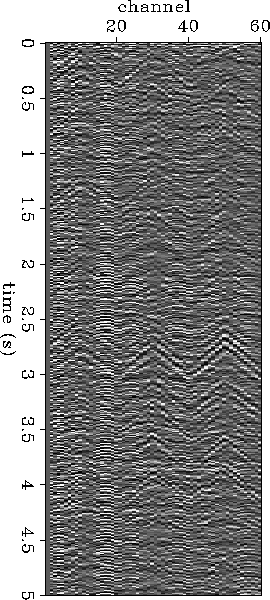To make a long story short, solar physicists
figured out how to build an instrument like a video camera
which when pointed at the sun
uses the concept of Doppler shift to give us a virtual array
of ![]() seismometers on the sun's surface!
Further, they can position and space their million seismometers
just as easily as you can point and zoom a camera!
seismometers on the sun's surface!
Further, they can position and space their million seismometers
just as easily as you can point and zoom a camera!
We had a lot of fun with those solar seismograms. We couldn't let off any shots up there on the sun, but we did have an experiment much like that of geophones on the ceiling of the lecture hall or the hypothetical instrumented oil field. We got a magnificent common-midpoint gather. Disappointingly, the sun is a fluid and all its CMP gathers are almost exactly the same. No reflections. No shear waves either. But there are plunging waves that come back up and reflect off the sun surface, and go back down again for multiple bounces, about 5-6 clear multiple reflections. Their velocity was 10 km/sec at the sun's surface growing rapidly with depth.
We call imaging based on the ambient noise, ``acoustic daylight imaging''. Our excursion into solar seismology left us with the embarrassing situation that we had demonstrated this concept on the sun before we were able to demonstrate it on earth.
|
strip
Figure 1 Noise record after notch-filtering (Bryan Kerr and James Rickett) |  |
Since then we have had better luck on earth.
Some
students![[*]](http://sepwww.stanford.edu/latex2html/foot_motif.gif) set up a local geophone array.
On their first try, without using any sources,
they got the ground roll loud and clear,
and some hints at reflections.
Naturally, we feel optimistic about the instrumented oil field.
We only hope they don't botch it when they build it.
We live in a 3-D world, and we don't think 2-D data will work.
set up a local geophone array.
On their first try, without using any sources,
they got the ground roll loud and clear,
and some hints at reflections.
Naturally, we feel optimistic about the instrumented oil field.
We only hope they don't botch it when they build it.
We live in a 3-D world, and we don't think 2-D data will work.
 |